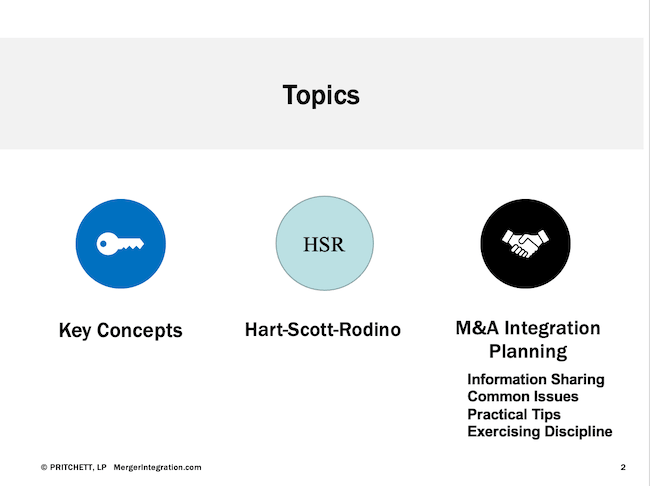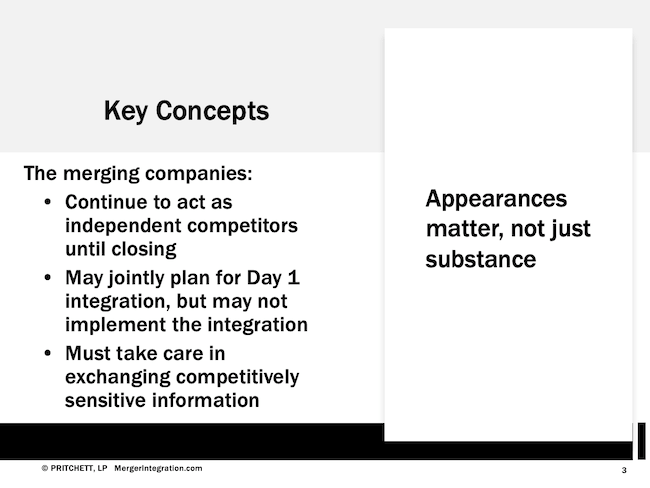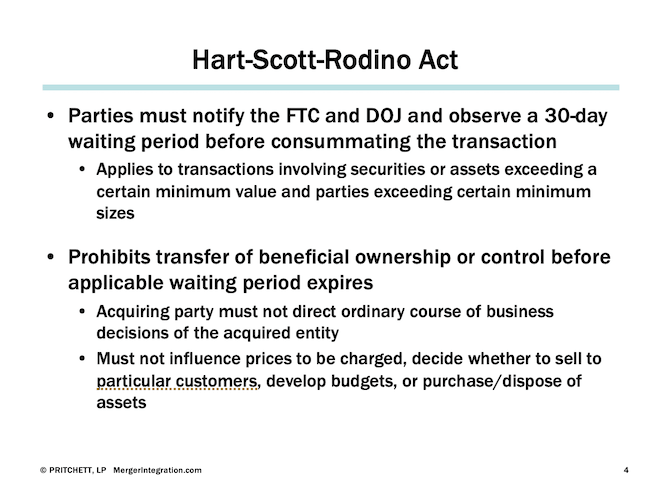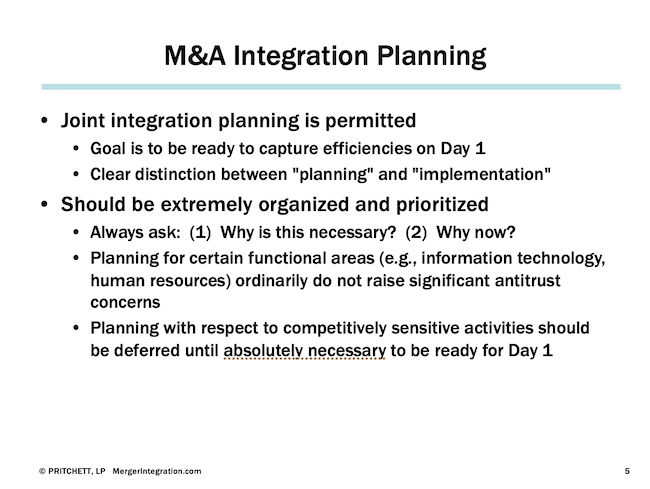Topics
Key Concepts
Hart-Scott-Rodino
M&A Integration Planning:
- Information Sharing
- Common Issues
- Practical Tips
- Exercising Discipline
Key Concepts
- The merging companies: Continue to act as independent competitors until closing
- May jointly plan for Day 1 integration, but may not implement the integration
- Must take care in exchanging competitively sensitive information
Appearances matter, not just substance.
Hart-Scott-Rodino Act
-
Parties must notify the FTC and DOJ and observe a 30-day waiting period before consummating the transaction
- Applies to transactions involving securities or assets exceeding a certain minimum value and parties exceeding certain minimum sizes
-
Prohibits transfer of beneficial ownership or control before applicable waiting period expires
- Acquiring party must not direct ordinary course of business decisions of the acquired entity
- Must not influence prices to be charged, decide whether to sell to particular customers, develop budgets, or purchase/dispose of assets
M&A Integration Planning
-
Joint integration planning is permitted
- Goal is to be ready to capture efficiencies on Day 1
- Clear distinction between "planning" and "implementation"
-
Should be extremely organized and prioritized
- Always ask: (1) Why is this necessary? (2) Why now?
- Planning for certain functional areas (e.g., information technology, human resources) ordinarily do not raise significant antitrust concerns
- Planning with respect to competitively sensitive activities should be deferred until absolutely necessary to be ready for Day 1...









